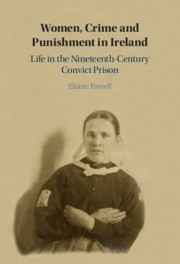Book contents
- Women, Crime and Punishment in Ireland
- Women, Crime and Punishment in Ireland
- Copyright page
- Dedication
- Contents
- Figures, Maps and Tables
- Acknowledgements
- Abbreviations
- Introduction: ‘Another generation of jail-birds’
- Case Study 1 ‘The terrible temptation’
- Case Study 2 ‘A gang of coiners’
- Case Study 3 ‘The workhouse girls’
- Case Study 4 ‘A person of very superior attainments’
- Case Study 5 ‘A most remote part of the country’
- Bibliography
- Index
- References
Bibliography
Published online by Cambridge University Press: 21 September 2020
- Women, Crime and Punishment in Ireland
- Women, Crime and Punishment in Ireland
- Copyright page
- Dedication
- Contents
- Figures, Maps and Tables
- Acknowledgements
- Abbreviations
- Introduction: ‘Another generation of jail-birds’
- Case Study 1 ‘The terrible temptation’
- Case Study 2 ‘A gang of coiners’
- Case Study 3 ‘The workhouse girls’
- Case Study 4 ‘A person of very superior attainments’
- Case Study 5 ‘A most remote part of the country’
- Bibliography
- Index
- References
Summary

- Type
- Chapter
- Information
- Women, Crime and Punishment in IrelandLife in the Nineteenth-Century Convict Prison, pp. 261 - 286Publisher: Cambridge University PressPrint publication year: 2020

